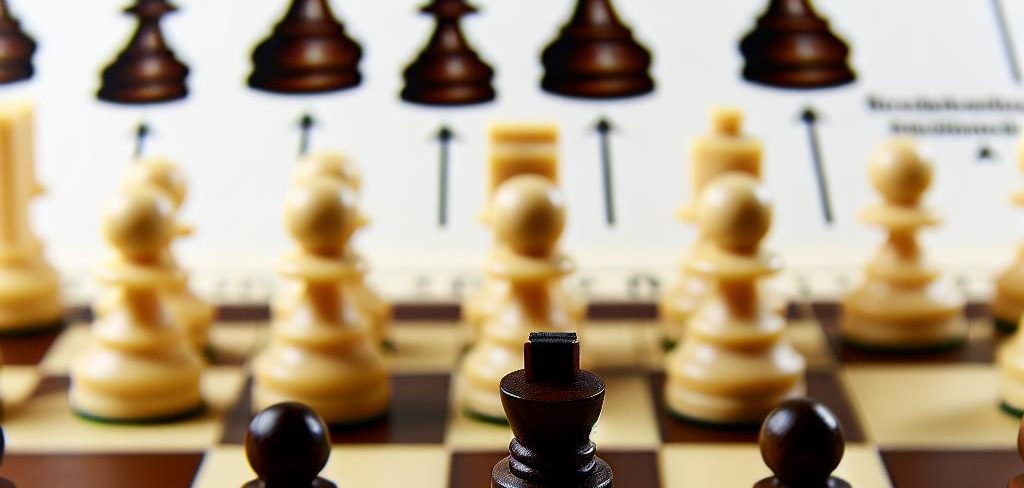The Fundamental Role of Pawns in Chess
Chess, a game of strategic depth and complexity, relies on the harmonious interaction of its pieces across the board. Among these pieces, pawns appear unassuming and modest, often underestimated due to their limited movement and lower individual value compared to the more dominant pieces like the queen or rook. However, a deeper understanding reveals that pawns are indispensable, forming the backbone of any successful chess strategy. Their influence can fundamentally alter the course of play, making them pivotal for any player seeking to optimize their performance.
Opening the Game
In the initial phases of a chess game, players are tasked with establishing control over the board, particularly its center, which serves as a strategic stronghold. Pawns, positioned at the forefront, are well-poised for this task. Central pawns, such as those ahead of the king and queen, are instrumental in seizing control. By advancing these pawns, players create a platform for more powerful pieces to develop, allowing them to stake a claim to essential squares. This approach is frequently highlighted in various chess materials and instructional content, as mastering the art of openings is crucial for any aspiring chess player. Educational resources such as chess courses or books provide in-depth analyses and advice on managing openings effectively. Online platforms like Chessable serve as valuable repositories of knowledge on this subject.
Shielding and Supporting
Pawns, due to their positioning, often act as guardians for their more potent counterparts, including the king. One of their defensive advantages lies in formations like the pawn chain, where interconnected pawns create a resilient barrier against threats. This chain not only shelters critical pieces but also supports offensive tactics by establishing a foundation upon which additional pieces can be positioned and advanced. This defensive and supportive role exemplifies why understanding pawn positioning is vital for maintaining both offensive and defensive stances throughout the game.
Capturing Mechanics
While other pieces have linear or overtly aggressive capturing abilities, pawns employ a unique diagonal capture method. This distinctive trait enables them to engage in both defensive and offensive maneuvers simultaneously. Through diagonal movement, pawns can challenge more powerful pieces and execute capturing sequences that disrupt the opponent’s plans. Mastery of pawn capturing mechanics provides players with strategic leverage, allowing them to construct threats and impose constraints on their adversaries’ options, ultimately guiding the flow of the game in their favor.
Promotion: Transforming Potential
One of the more intriguing elements of pawn play involves their potential for promotion. Upon successfully advancing to the opponent’s back rank, a pawn can be promoted to any major piece —a queen, rook, bishop, or knight. Typically, the pawn is promoted to a queen, elevating its value and tactical capabilities. This potential transformation is a core component of endgame strategies, where the strategic maneuvering of pawns can decisively alter the balance of power. For players interested in mastering these tactics, many instructional materials dive deep into endgame scenarios and the significance of pawn promotion. Online resources such as Chess.com provide lessons that explore this area in detail, helping players harness the full potential of pawn promotions in their endgame play.
Pawn Structures and Their Impact
The arrangement of pawns on the board, known as the pawn structure, significantly affects a game’s strategic landscape. Certain configurations carry distinct strategic implications. For instance, isolated pawns lack neighboring pawns, potentially becoming easy targets for enemy attacks. Doubled pawns occur when two pawns of the same color occupy the same file, often leading to weakness. Conversely, well-structured pawn islands —groups of pawns separated by empty files— can support robust and adaptable positions. Understanding these formations helps players anticipate and respond to unfolding dynamics within a match.
Strategic Sacrifices
Occasionally, a skillful player might employ tactics that seemingly contradict conventional wisdom, such as sacrificing a pawn. While this act involves giving up material, it is often a strategic decision aimed at achieving a greater positional or tactical advantage. By relinquishing a pawn, players might open critical lines for pieces, dismantle an opponent’s defenses, or expedite the development of other pieces. Successfully pulling off a pawn sacrifice demands foresight, meticulous planning, and the ability to predict subsequent opportunities that arise. Achieving proficiency in evaluating such sacrifices necessitates practice and study, often explored in-depth in advanced chess theory.
In conclusion, pawns, though modest in stature, wield considerable influence within the game of chess. Their strategic merit cannot be overstated, as a well-conceived appreciation of their diverse roles fortifies a player’s ability throughout the game. For those dedicated to enriching their chess expertise, exploring the expansive world of pawn strategies through articles, instructional books, and specialized courses proves invaluable. Engaging with such resources fosters an enhanced understanding of chess, enhancing gameplay and paving the way for success across myriad contests and challenges encountered on the chessboard.



